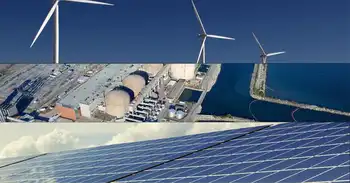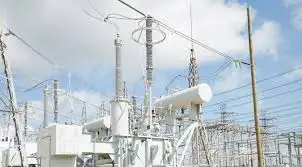UK to lead on hybrid and electric cars
By Electricity Forum
NFPA 70e Training - Arc Flash
Our customized live online or in‑person group training can be delivered to your staff at your location.

- Live Online
- 6 hours Instructor-led
- Group Training Available
With the potential to create up to 10,000 new British jobs and help preserve many thousands more; this comes as part of wider Government plans to make the most of the low carbon economy, with estimates that around a million green jobs could be generated by 2030.
Fulfilling Gordon Brown's pledge this summer to speed up the delivery of low carbon and electric vehicles for ordinary motorists, experts from across the globe are gathered in Whitehall today to examine how to turn this into a reality.
Speaking at this International Experts Meeting, Transport Secretary Geoff Hoon set out the next steps across Government to deliver a £100 million commitment to accelerate the emergence of the greener vehicles of tomorrow. As part of this 100 electric cars will be provided in UK towns and cities to allow families and other motorists the opportunity to feedback the practical steps needed to make greener motoring an everyday reality.
He said: "Electric cars and other low carbon vehicles, like plug-in hybrids, cut fuel costs and reduce harmful emissions. If we can inspire more people to use them, it will help us to make a positive impact on climate change.
"Alongside this, their research and manufacture is an emerging industry with the potential to create new jobs and safeguard existing employment in the UK. Therefore exploring how to ensure they are a practical and affordable everyday option makes sense all round. That is what the cross Government package of measuresÂ… will do."
Motor manufacturers will be invited to bid for the opportunity to participate in a £10 million project to run electric car and ultra low carbon vehicle demonstration projects, overseen by the Technology Strategy Board. This will see around 100 electric cars provided to allow families and other motorists the opportunity to feedback the practical steps needed to make greener motoring an everyday reality.
At the same time, up to £20m has been dedicated to UK research into improving technology that could make electric and other green cars more practical and affordable.
This follows the publication of important new research which concludes that, correctly managed, the UK power system could support widespread use of electric cars and their charging needs without requiring large numbers of new power stations.
Secretary of State for Business, Lord Mandelson, said: "Investment in greener motoring forms part of our plan to put the UK at the forefront of the new low carbon revolution. We know our automotive sector has a global reputation for taking forward new technology and we want the UK to be at the heart of new developments in electric vehicles.
"In the recent Manufacturing Strategy we made clear our determination to support the next generation of low carbon cars and today we are delivering on our promises. Work will continue next year when we produce our low carbon industrial strategy."
The Government has already committed to removing the barriers that could slow a changeover to greener motoring. This includes a commitment to facilitate the roll-out of charging infrastructure through the planning system and to collaborating with other countries to develop international standards and consider how best to encourage the right consumer market to promote electric and other low carbon vehicles.
Work also continues with energy companies and the National Grid to assess the impact on the electricity system of the widespread use of electric drive vehicles.
To encourage the mass production of green vans for the first time, the Department for Transport also announced today that 10 companies have been shortlisted to bid to provide electric and low carbon vans to some councils and other public sector bodies, like the Royal Mail, as part of a £20m programme to ensure all road transport emissions are reduced. Liverpool, Newcastle, Gateshead, Coventry, Glasgow and Leeds will be among the first councils to trial green vans on their streets.
The 10 companies are: Ford; Mercedes Benz; Citroen; Ashwoods; Land Rover, Modec; Smiths; Electric Vehicles; LDV; Nissan and Allied Vehicles.
Transport Secretary Geoff Hoon added: "Vans make up around 15% of road transport emissions in the UK, and their emissions are rising more than any other mode of road transport.
"That's why we are committed to this new programme to help kick-start the market. In the public sector there is considerable demand for vans so we want to use our spending power to lead the way in developing lower carbon options that will appeal across the board."











